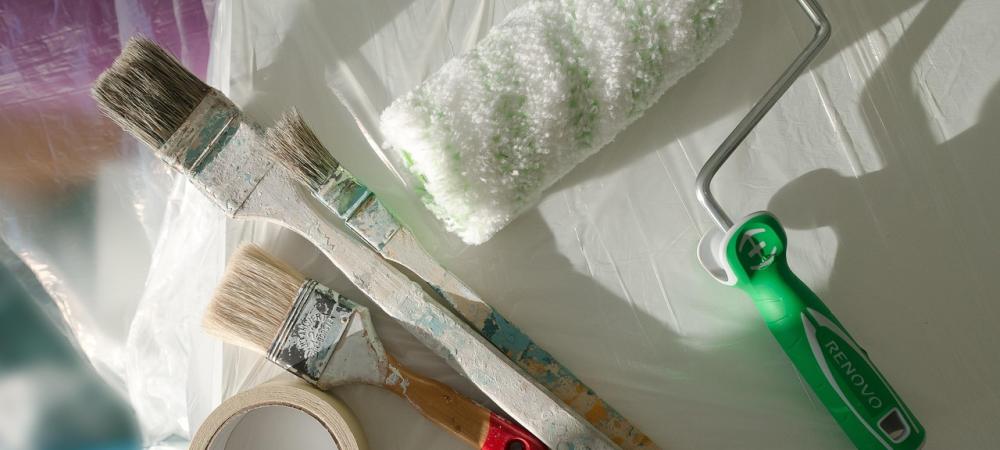How to Prevent Pests When Renovating Your Home in North Carolina

Renovating your home in North Carolina is a great way to improve its functionality and appearance. However, during the renovation process, your home can unknowingly become more attractive to pests. From disturbed soil and exposed wood to new hiding places within walls, renovations create opportunities for pests to sneak in. Taking the right preventative steps during your renovation can save you from costly infestations down the line.
Top Pests That Take Advantage of Renovations
Termites
Termites are a major concern in North Carolina, where warm, humid conditions provide an ideal environment for these wood-destroying insects. During renovations, the soil around your home may be disturbed, and wood structures may be exposed, making it easier for termites to gain entry. Once inside, termites can go undetected while causing significant damage to the wood, compromising the structural integrity of your home.
If you’re renovating in an area with a history of termite activity, it's essential to have a professional termite inspection before and after your renovation. Additionally, if you’re doing any landscaping or digging near your home’s foundation, use caution, as disturbed soil can easily expose termite colonies to your home.
Check out 6 signs you might need a termite inspection.
Rodents
Rodents, such as rats and mice, love finding new hiding spots within the walls, ceilings, and floors of a home under renovation. Open walls and exposed areas can act as an invitation for rodents to enter, especially when construction debris or leftover materials provide food and nesting opportunities.
Rodents are also excellent climbers and can enter through small gaps, cracks, or holes in the exterior of your home. They can chew through materials like insulation and wires, causing further damage in the process. While renovations may make it easier for rodents to enter, they can also offer them a chance to nest in previously hard-to-reach areas. This can lead to long-term pest issues if left unchecked.
Take these 8 steps to keep rats away from your home.
Cockroaches
Cockroaches are another pest that thrives in homes under renovation. These resilient insects are highly attracted to areas with construction debris, such as wood, drywall dust, or leftover food particles. Moisture is also a key factor that attracts cockroaches, as they need water to survive. Renovations can disturb pipes, expose leaks, or create water accumulation, offering a prime breeding ground for cockroaches.
To minimize the risk of cockroaches during your renovation, it’s important to keep construction areas clean and dry. Seal up food storage areas and clean up any spills or messes immediately. Consider using pest control measures, such as bait traps or natural deterrents, to prevent cockroaches from moving in.
Check out ways to get rid of cockroaches in NC homes.
Ants
Ants, particularly carpenter ants, can become a major problem during renovations. These pests are often attracted to wood that has been disturbed, such as exposed beams or framing. Carpenter ants tunnel through wood to build nests, and this can cause significant damage over time if left undetected. The presence of moisture, which is common during renovations due to leaks or water used for construction, can make your home even more inviting to ants.
During your renovation, keep a close eye on any wood structures that are exposed. If you notice any signs of ant activity, such as small piles of sawdust or ant trails, address the issue immediately by contacting a pest control professional.
Preventative Steps During Renovation
Seal Entry Points Before Construction Begins
- Before any construction work starts, thoroughly inspect the exterior and interior of your home for potential entry points for pests. This includes gaps around windows, doors, foundation cracks, and holes in walls.
- Sealing these entry points with caulk, weatherstripping, or foam insulation can prevent pests from finding their way inside.
- It’s also a good idea to temporarily cover ventilation openings or vents during construction to keep rodents or insects from slipping in through these smaller openings.
Sealing entry points early in the process is one of the most effective ways to avoid pest problems as the renovation progresses.
Store Building Materials Properly
Proper storage of construction materials can prevent pests from being attracted to them.
- Keep wood, drywall, and insulation elevated and covered, as moisture can build up on these materials, attracting termites, ants, and cockroaches.
- Store materials away from the home’s foundation, ideally in a dry, well-ventilated space.
- If you’re using materials like lumber that could potentially attract termites, it’s worth considering treatments such as termite-resistant wood or applying pest control products to the materials before they’re used in construction.
Use Pest-Resistant Insulation and Sealants
When installing insulation or sealing your home, consider using pest-resistant products.
- For example, pest-repelling spray foam insulation can help keep rodents out of walls, while sealants designed to deter pests can help close gaps and cracks around windows and doors.
Using pest-resistant materials will provide an extra layer of protection, especially in areas like basements or attics, which tend to be more vulnerable to pests.
Keep Construction Areas Clean and Dry
During the renovation, it’s essential to maintain cleanliness throughout the worksite.
- Pests like cockroaches, ants, and rodents are attracted to food scraps, construction debris, and moisture.
- Regularly sweep up dust and debris, and clean up any spills immediately.
- If you have plumbing work done, ensure that any exposed pipes are properly sealed to avoid attracting moisture-loving pests like cockroaches.
Post-Renovation Pest Prevention
Once your renovation is complete, it’s important to inspect your home thoroughly to ensure no pests have moved in during the process. Focus on areas that were worked on, like walls, basements, attics, and crawl spaces, as these areas are often prime spots for pests.
Check for Moisture Issues
Moisture is a major attractant for pests like cockroaches and ants. After the renovation, inspect areas where leaks or plumbing work occurred. If any new moisture problems have arisen, address them promptly to avoid creating a breeding ground for pests.
Inspect for Signs of Infestation
Look for signs of termites, rodents, or other pests that may have entered during the renovation. Small holes, droppings, chewed wires, or sawdust are all signs of potential pest activity. If you spot anything suspicious, contact a pest control professional for an inspection and treatment to prevent any future infestations.
How Proactive Measures During Renovations Save Homeowners from Costly Infestations
Renovations are a great way to update your home, but they also present opportunities for pests to gain access. By taking proactive measures, such as sealing entry points, storing materials properly, and using pest-resistant products, you can help prevent pests from infiltrating your home.
In North Carolina, where pests like termites, rodents, and cockroaches are common, it’s important to stay vigilant. By ensuring your home is pest-proof during renovations and conducting thorough inspections after the project is complete, you can avoid the stress and cost of dealing with a pest infestation. Being proactive now will save you from headaches and costly repairs down the line, ensuring your home remains comfortable, safe, and pest-free for years to come.
If you find yourself facing a pest problem after your renovation, don't hesitate to contact your local pest control experts at Triangle Pest Control to get the issue under control quickly and efficiently.
Check Out Our Other Blogs:



